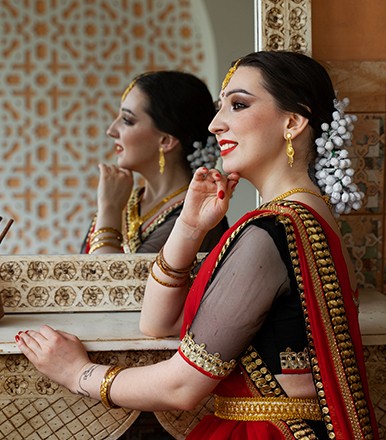Every individual has a certain role and must fulfill societal expectations based on gender. These roles and expectations are often considered ingrained, passed down from generation to generation, and called Gender roles.
From a very young age, children grow up watching their parents, Mother and Father, perform different roles assigned to them. As a result, children grow up following their example without ever questioning why men and women have to perform these different roles. Why are men always associated with power, aggression, and bread-earning, while women are the natural caregivers and nurturers of the family?
The answer to these questions lies in the origin of gender roles, and we must investigate how society assigns specific roles to men and women.
These questions need answers in today's world, as we see several conservative thoughts being challenged, with both genders leaving behind their assumed roles and molding society towards a new horizon. Hence, in this article, we will unravel the intricacies of gender roles and understand what they stand for when seen through different lenses.
Gender Roles in Prehistoric times
The first real evidence of gender roles in human society dates back to prehistoric times. According to researchers and their findings, gender roles of that time were labor-centric, meaning that men and women were expected to prefer certain roles based on their biological differences.
These roles are considered more practical adaptations of the needs of that time than anything else. Typically, stronger men were considered suitable for tasks requiring physical strength and endurance. Hence, they were the hunters and defenders of their society/tribe. Women, on the other hand, with their reproductive capabilities, were associated with nurturing roles like child-raising and gathering food.
Archaeological evidence from cave art and artefacts provides these insights. It is safe to conclude that both genders, with their different roles, served a singular purpose of Survival.
Women: the pole figure in society
As society progressed, men and women took up different and more distinguished roles today considered gender-specific. However, no inherent mandates prescribe certain specific roles to each gender.
Several historical examples show women taking on roles that later became defined as men's jobs. The oldest example comes from the Vedic scriptures of Hinduism. In several versions of the famous Ramayana, Sita, the wife of Lord Rama, is shown as one of the most fearless warriors. Unlike the later versions, which show her as a docile yet determined character, Sita is much more physically and socially powerful.
Talking about showing fighting spirit, Hinduism has another revered figure in the form of Savitri. After her husband's death, she went on to persuade the Yamaraj and engaged in a battle of wits with him until he let her husband, Satyavan, return from the land of the dead.
These are just some examples of how women of Vedic times showed great character. Hundreds of such figures in Hindu history show women holding pole positions in society and being respected for their grit and power.
However, as we move towards recent human civilizations, gender roles become despair as one gender is given precedence over the other. Whether it be the Romans or the Christians, both kept men as prominent figures in their revered religion and societal status.
It all started with the religious beliefs of these civilizations. The first and most prominent ancient civilization is that of Rome. Romans are considered one of the most powerful societies in history. Yet, they believed and progressed with the ideology of women being inferior to men. This thinking might have been decreed from their mythology, which showed women in a bad light. Starting with Pandora, who is accused of bringing unhappiness and vices. Hence, the Roman civilization didn't even consider naming their women important. They were given a feminine version of their family names.
A move forward in time, towards the Middle Ages, shows no mercy on women. With the rise of Christianity, the situation for women remains the same. In their societal structures, certain beliefs regarding gender roles and hierarchy were prevalent. Historical texts, like the Bible, were often interpreted to justify a hierarchical order, with men positioned above women. This perspective influenced various aspects of society, including the distribution of power and authority. Consequently, women were often marginalized, with limited opportunities for leadership roles in both religious and secular domains.
Hence, when these European nations went around the world making colonies, they brought their misogynistic ideas with them and imposed them on others, which gave women some importance.
The cultural shift in Gender roles
Women today enjoy a lot of freedom. They are seen as equal to men in terms of societal power and stature. But this change has not come overnight. It has seen generations of activism and struggle by the oppressed in society.
The biggest contributor among them has to be the rise of feminism, which took waves to develop and reach across different countries in the West. Feminism demands equal rights and treatment for women in different walks of life. From reproductive rights, workplace discrimination, and gender-based violence, it sparked widespread discourse and mobilized women to demand greater equality.
Another major factor that played a crucial role in reshaping societal attitudes towards gender roles was Education. With its help, women were equipped with the right knowledge and skills, which later helped them break the norms of patriarchal society. Educational institutes also helped men understand the disparity between them and women for ages, which also helped bridge the gap.
In recent years, the internet has become the catalyst of change. It helps bring marginalized voices into the limelight. Being online also helps people join communities that rally for their cause, further bringing people together.
Today, men take up jobs that historically would have been recognized as women's. From stay-at-home dads to those working in nursing industries, men today are open-minded, approaching a job as just another job, not something that will emasculate them. Hence, don't be surprised when you drop your child at a daycare center and find a man greeting you with a brimming smile next time.
History denies the notion of predetermined gender roles. Men and women have defied societal constraints, proving every job is gender-neutral. Embracing roles traditionally associated with the opposite gender shouldn't threaten masculinity; it's a testament to the diversity of human potential. No task inherently belongs to a specific gender, and individuals are breaking free from the constraints of traditional expectations. Men can embrace nurturing roles just as women excel in positions of power and leadership. As we continue to advocate for equal opportunities and dismantle the remnants of outdated beliefs, we pave the way for a future where individuals are valued not for their gender but for their talents, skills, and contributions to society.
Hello Fitness Magazine is your go-to resource if you're seeking comprehensive insights into holistic wellness for the modern woman. From fitness tips tailored to busy schedules to mindfulness practices and nutrition guidance, our magazine covers a wide spectrum of topics to support your journey towards a balanced and Healthy lifestyle. Visit the Website to explore our latest articles and discover expert advice on achieving wellness in today's fast-paced world.














